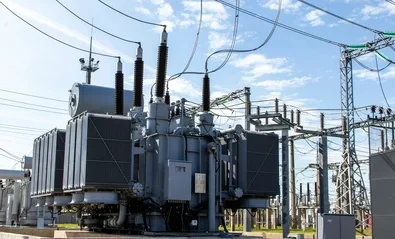Power losses is common during high voltage transmission . High voltage power transmission involves moving electrical power from the source where it is being generated to consumer premises (sometimes hundreds of kilometers way) where it need to be used.

High voltage transmission
In high voltage power transmission, power loss during transmission is minimized by transporting electrical power in high voltage but at a small current. High voltage transmission involves transporting electrical power over long distances through electrical cables. From electricity topics, we learn that conductors have some resistance to the flow of currents. The resistance in a conductor is proportional to the length of the conductor. Power losses during transmission is caused by the heating effect that results from resistance of current in the conductor. Because the distance involved can be hundreds of kilometers, power losses can be significant.
Power losses during transmission
we determines power dissipated in a circuit from the relation:
Power P = VI.
Where V is voltage across the circuit and I is the current flowing in the circuit.
From Ohms law of electric current; V= IR. Where R is the resistance in the circuit.
Therefore, Power = (IR)I = I2R.
From the equations above, you can see that power loss can be high when current is high for a given resistance value in the conductor.
Because power is constant, the idea of transmitting power efficiently is by increasing its voltage. Increasing voltage ensures reduced current for the same power source. The best way to minimize power loss during transmission is to transmit at very high voltage. It should also be done at the smallest current possible. We usually step up the voltage produced at the source to high voltage values. This adjustment brings the current closer to zero as much as possible.
power providers can also reduce electrical resistance in transmission cables by choosing cable with thick diameter but one that is a good conductor of electricity.
Power providers prefers aluminum as thee best choice for transmission cables since it is a good conductor, cheap to obtain and it is not heavy. An alternating current power source is the one preferred in high voltage transmission because it is can easily stepped up and down when needed.
Example Problems
A power company uses a power cable of with overall resistance of 5000Ω to transmit 10Kv at a current of 0.8A. They use a transformer to step up this voltage to 25KV by a transformer, determine:
(i) power loss expected if there was no step-up
(ii) power loss expectations after step-up
(iii) percentage ratio between power power lost before step-up to power loss after step-up
solution
(i) Power = I2R.
hence power loss when voltage is not stepped up=(0.8)R x 5000=3200 watts.
(ii) Assuming that there is no power loss in the transformer; After stepping up the following equation applies:
power before step-up = power after step-up.
power before step-up is the power fed into primary coil of the transformer;
Using the transformer equation; Power in primary coil = power in the secondary coil.
That is; VpIp = VsIs
substituting in the equation to get the current after stepping up we have:
10000v x 0.8A = 25000v x Is
and hence;
stepping up has reduced current flow from 0.8A to 0.32A
power lost due to this new current will be:
Power lost = (0.32)2 * 5000 = 512 watts
(iii) The ratio of power lost before stepping up to power lost after stepping up will be
from the above working, one can see that power loss has been reduced by 625% when power is stepped up from 10KV to 25KV. This proves to us that stepping up power to reduce current contributes to reduction of power loss in a big way.
Question for practice
A generator produces 700kW at a voltage of 15kV. The voltage is stepped up to 125KV and the power transmitted through the cables of resistance 300Ω to a step-down transformer in a sub-station. Assuming that both transformers are 100% efficient:
(a) calculate:
(i) The current produced by the generator
(ii) The current that flows through the transmission cables
(iii) The voltage drop across
Related Topics
- Magnitude of induced EMF
- The high voltage transmission
- Induced Electromotive Force(E.M.F)
- Mutual Induction as in Electromagnetic Induction
- An a.c Generator
- Waves


Leave a Reply to Understanding the Direction of Induced E.M.F: Exploring Lenz's Law Cancel reply